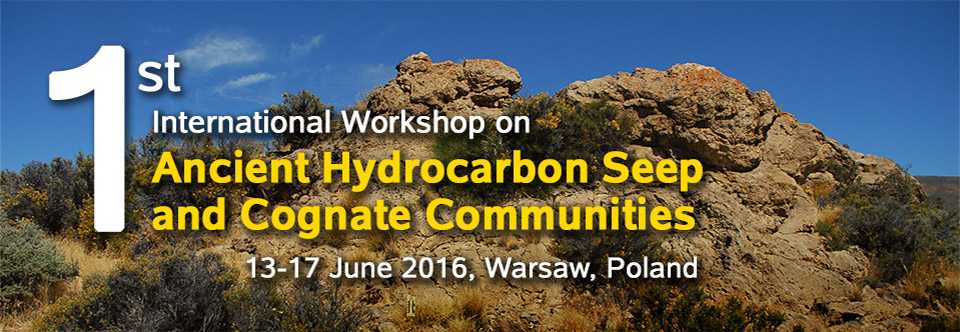
PREDATION SCARS ON CHEMOSYMBIOTIC BIVALVES: A NEW TOOL TO INFER
SULFIDE TOLERANCES OF SEEP INHABITANTS IN THE GEOLOGIC RECORD
Steffen KIEL1, Kazutaka AMANO2, and Robert G. JENKINS3
1Swedish Museum of Natural History, Dept. of Palaeobiology, Box 50007, 10405 Stockholm, Sweden; 2Joetsu
University of Education, Department of Geoscience, Joetsu 943-8512, Japan; 3Kanazawa University, School of
Natural System, College of Science and Engineering, Kanazawa City, Ishikawa 920-1192, Japan.
Corresponding author: steffen.kiel@nrm.se
Three species of chemosymbiotic bivalves with different inferred sulfide tolerances and life habits
from a lower Oligocene seep deposit in eastern Hokkaido, Japan, were investigated for drill holes
and scars of durophagous predation. The thyasirid Conchocele bisecta had the lowest inferred
sulfide tolerance and showed the highest frequencies of repair scars (0.4). The bathymodiolin
Bathymodiolus inouei and the vesicomyid Hubertschenckia ezoensis most likely lived at higher
sulfide concentrations than C. bisecta and show lower repair frequencies (0.24 in B. inouei and
0.17 in H. ezoensis). Based on the assumption that increased sulfide concentrations are increasingly
toxic to predators, we conclude that the frequency of repair scars in the three investigated
species is inversely related to the sulfide concentrations that these species are able to tolerate. Thus
when applied carefully, the frequency of shell injuries among shelled invertebrates at fossil seeps
may be used to infer their relative tolerances toward sulfide, and may thus represent a tool to assess
the life habits of extinct invertebrates that inhabited methane seeps in the geologic past.
